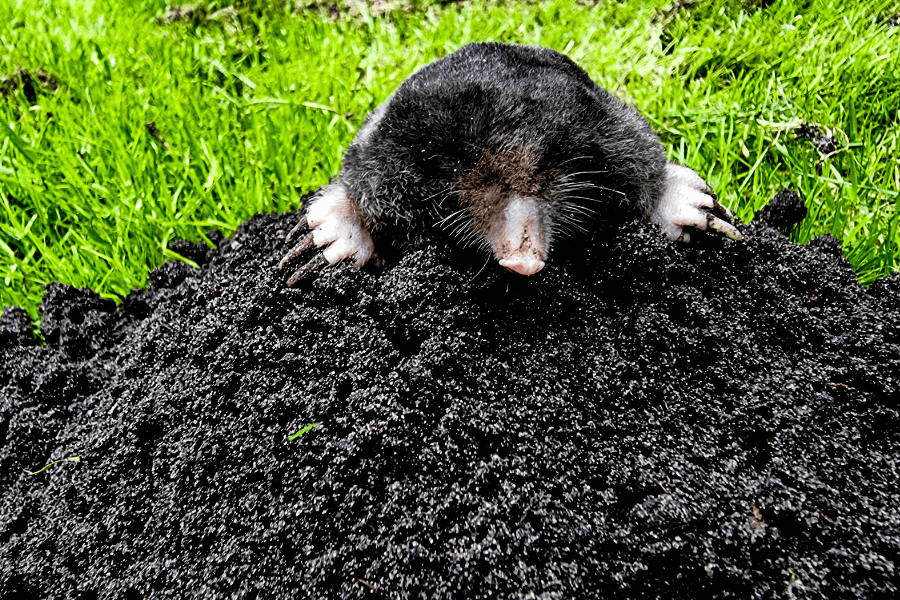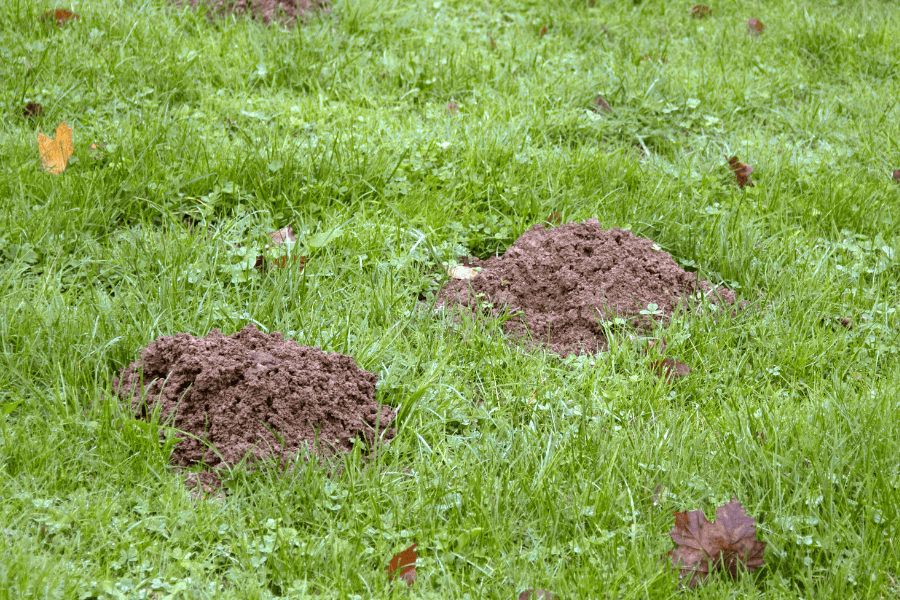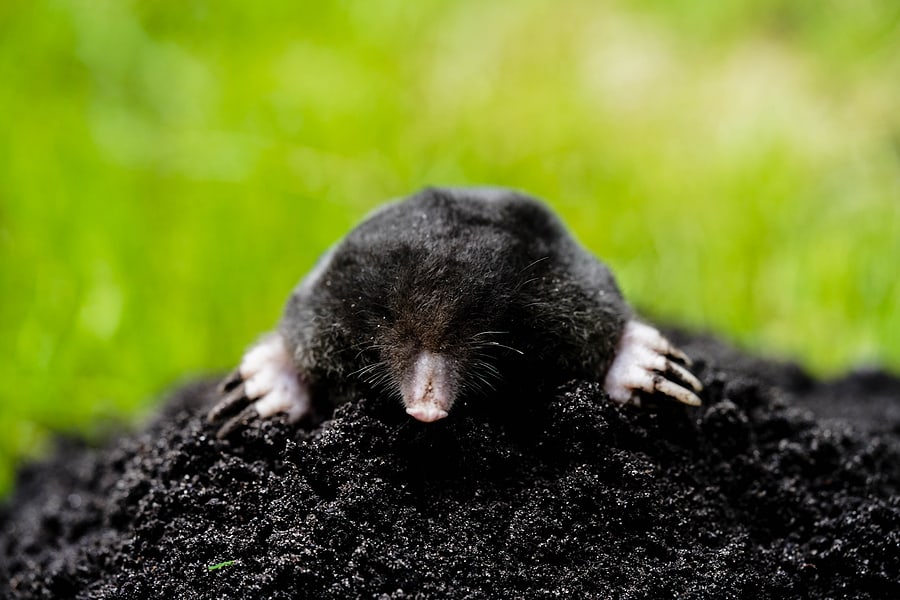READY TO GET STARTED?
REQUEST A FREE ESTIMATE
Fill out the form below or call (888) 466-7849 for a free, no-obligation estimate.

Moles can be one of the most destructive pests for yards. Once these creatures invade, they will dig and destroy your yard! One of the best steps for mole prevention on your property is understanding what’s bringing them there in the first place.
Moles are looking for one thing in on your property – food! Moles need a plenty amount of food source to survive and tend to eat various lawn insects, including grubs, earthworms, and other bugs. If you have available food sources in your yard, they will dig through to get it and leave behind tunnels, holes, and mounds of dirt. Moles can dig up to 18 feet per hours and as they are digging will detach the roots of plants to not only allow weeds to grow but will also kill the lawn, plants, and trees too.
Some common signs that a mole has invaded your yard include,
Mole prevention starts with reducing the sources that are attracting them in the first place. Check out our do-it-yourself mole control tips:
If you suspect a mole infestation on your property or other wildlife creatures, contact your local pest control company for a free evaluation.

A perfectly manicured yard can be destroyed by moles in an instant! These creatures dig tunnels in search of lawn pests in your yard, including grubs, earthworms, and other bugs. Once moles invade, it can be difficult to control and remove them from your property as they can go undetected for long periods of time. One of the best ways to understand mole prevention is understanding the signs of their activity in the first place. We break down common mole signs and the preventative measures to place at your home to avoid their destruction.
There’s no one sign that can pinpoint moles in your yard but there’s several to lookout for if you suspect you’ve got a mole infestation, including:
If you’ve noticed any or all of these signs on your property, it’s likely that you have a mole in your yard.
There are several methods you can utilize to avoid mole activity. Consider the following mole control tips and tricks:
Since moles live underground, it can be difficult to prevent and control them. The best treatment for moles is target elimination through baiting, which is best done by a professional wildlife control company. These expert professionals will be able to track the mole, strategically place traps, utilize effective baits, treat the mole tunnels to avoid another mole infestation, and monitor the tunnels to ensure all moles have been removed. If you suspect moles in your yard, call your local wildlife control company for a free evaluation.

Moles can destroy your perfectly manicured lawn in a matter of days. These small, burrowing insectivores can be found in North America, Europe, and Asia. While they don’t actually eat plants and roots, their burrowing causes significant damage to both lawns and flower beds. Moles can dig up to 18 feet per hour and are most active in early morning and evening.
Moles are small in size, ranging between 4 and 11 inches in length and weighing up to 8 ounces. They are most notable for their long, thin, hairless snouts, small eyes, and lack of external ears. They are usually greyish-brown in color. Moles have large, powerful front feet with webbed toes that they use for burrowing underground while their hindfeet are narrow with slender claws. Moles are nearly blind but they make up for their lack of vision with an exceptional sense of smell.
Moles come into your yard in search of one thing – food! Their diet consists primarily of earthworms and grubs but they will eat other soil-dwelling insects, as well. Moles leave behind a trail of damage when they burrow in your yard, leaving visible trails and brown patches and holes in your lawn. Their tunnels cave in easily, leaving you at risk for injury when you step on them.
Some of the most common signs of moles in your yard are:
Because moles live underground they can be extremely difficult to prevent. The best treatment for moles is targeted elimination usually through trapping or baiting. It is also important to treat existing tunnels so new moles don’t replace the previously removed moles.
If you have a problem with moles or any other pests, contact your local pest control company who can properly assess your situation and treat it appropriately.
How to Prevent Little Black Ants
Is Green Mosquito Control Safe?